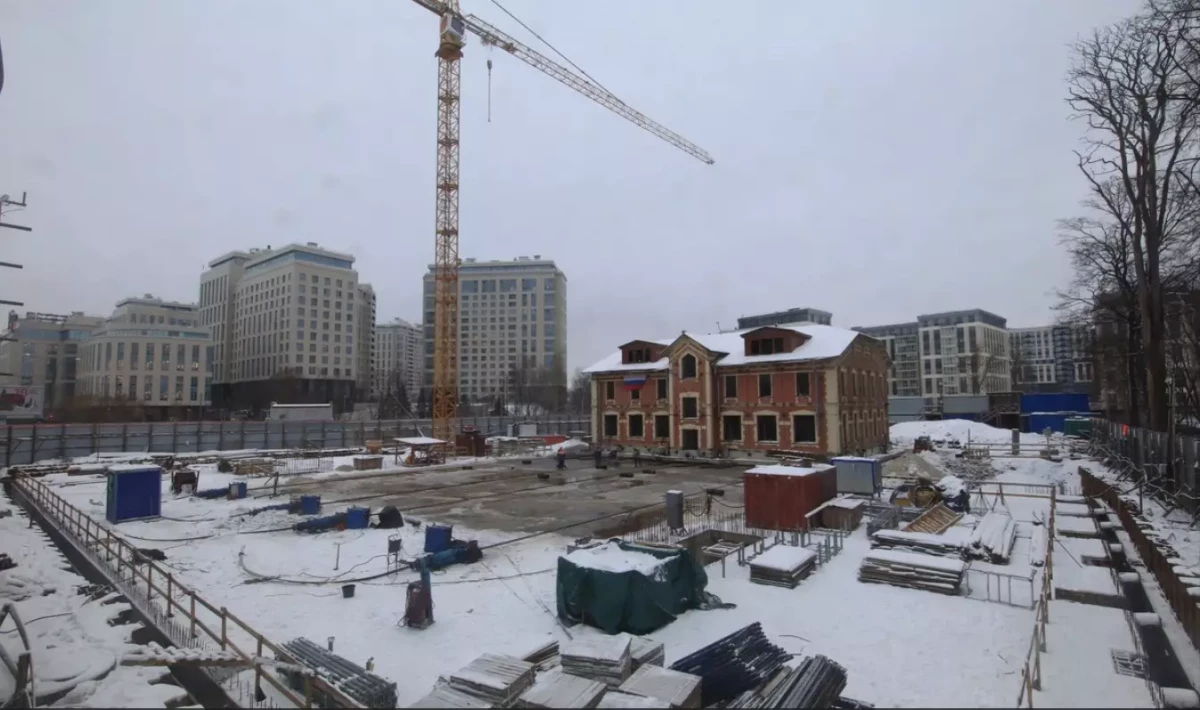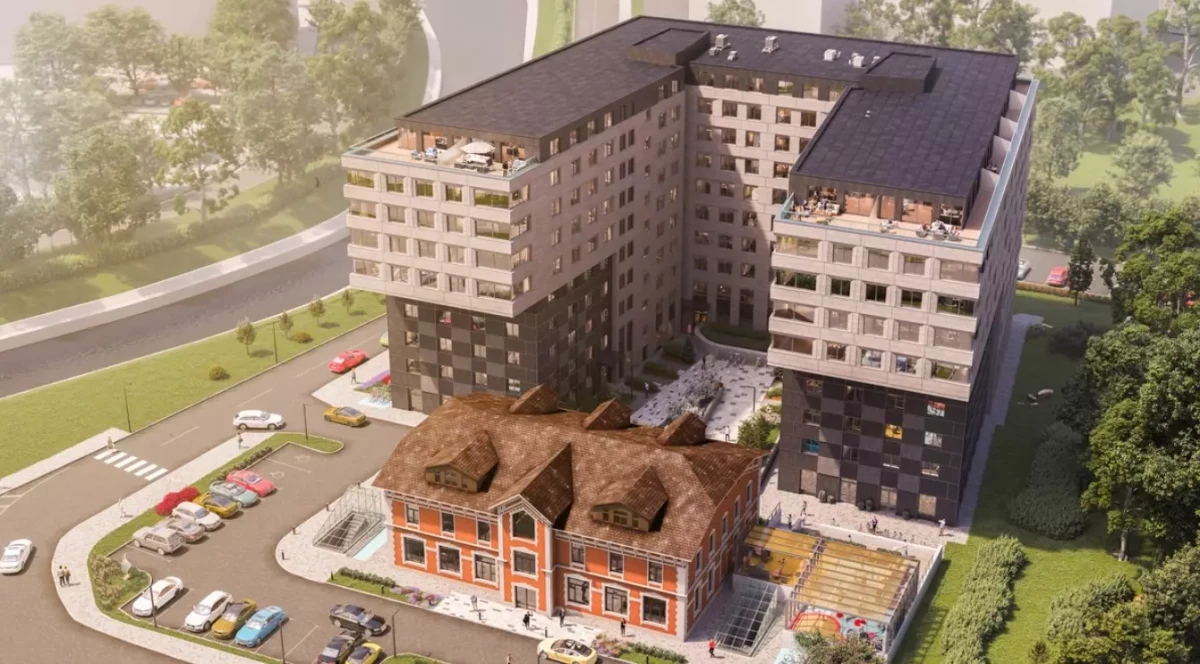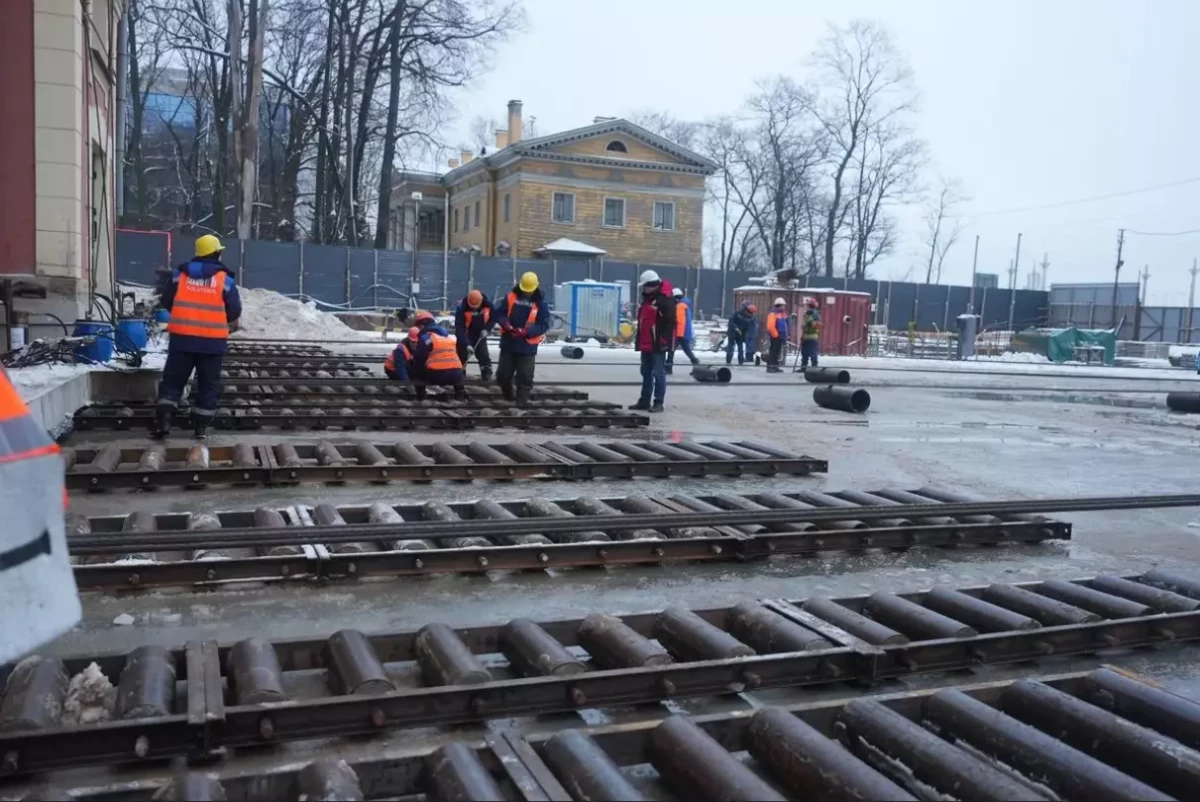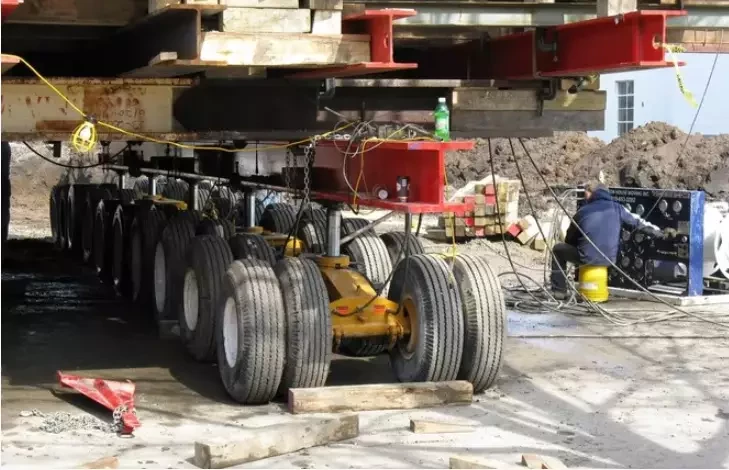21.02.2024
In St. Petersburg, a historic building was “moved”.
In St. Petersburg, the two-story building of the Imperial Orphanage on the embankment of the Black River was moved by 52 meters.

In the practice of Soviet construction, moving full-fledged buildings has not been uncommon since the 1930s. In recent decades, starting from the 2000s, this method of preserving older buildings, taking into account new urban development tasks, has not been resorted to.
We have drawn attention to this technology for preserving historical objects – we advise not to neglect it in favor of demolition in cases of designing new objects in existing development.
The house moved in St. Petersburg is a building from the early 20th century. It is interesting that KGIOP (Committee for State Control, Use and Protection of Historical and Cultural Monuments) did not recognize it as a monument, but it has the status of a "historical" building and is protected.
For the developer City Solutions, which is planning to build a new business-class residential complex “Minister” on the embankment of the Black River (completion date: Q4 2025), this building acts as an encumbrance.

The task was to preserve the building (Chernaya Rechka Embankment, 1). And it was solved without arranging scandalous examinations to clarify the status of the building’s value. Recently, St. Petersburg has been famous for its conflicts with urban preservationists in connection with the demolition of old buildings.
The 3,200-ton house "drove" on a roller system at a speed of 4 cm/min. The building was moved 7 m to the west, and then 45 m to the south (closer to the Vyborg Embankment). The technology has been known since the 1930s and was used in Moscow during the expansion of Tverskaya and other streets.
At the beginning of January 2024, this is one of the most discussed news items in the construction industry in St. Petersburg.
It is interesting that the house was not a very controversial object in terms of protection. However, against the background of the aggravation of contradictions in St. Petersburg around the demolition of historical objects, the developer made a respectable decision, investing in a fairly expensive technology and preserving the building, without any direct financial benefit in this, except for reputation. Thus, it was proven that it is possible to work with heritage, including in this way. This transfer is widely discussed in the media - after all, no one has moved buildings in St. Petersburg before.
The transfer of the Imperial Foundling Home took place in several stages. It was a complex and expensive process.
A slightly different technology is used in world practice. But it is too expensive – measured in half-billion budgets. Builders in St. Petersburg used a much cheaper Soviet technology for moving buildings. About 100 million rubles were invested in moving the building of the Imperial Foundling Home.
City Solutions talked about the process.
At the first stage, the external facade of the building was reinforced with metal reinforcement. Two 300 mm thick reinforced concrete slabs were installed under the building and in the basement. The upper slab, connected to the external frame of the house with special beams - stiffeners - served as a support for the building during the move and took its weight.
Around 50 jacks with a load-bearing capacity of over 150 tons were attached to this slab along the perimeter. The jacks rested on the lower slab, which was installed on the ground. The jacks were used to lift the upper slab with the house. After that, the structure was installed on a roller system, along which the house "rolled" from one place to another, where a new pre-built foundation was prepared.

Specialists from Lipgart Architects LLC, which was initially involved in the design of the new complex, officially advocate the revival of the methods of "transferring" historical buildings instead of demolition. Although, of course, demolition of the "interfering" building is currently the cheapest way to solve the problem. It is for this reason that developers and investors do not seek to resort to relocation.
The Moscow experience of the 1930s serves as a reliable technical basis for this. Having picked up the further design process, Intercolumnium LLC did not abandon the method and incorporated it into their project.
There are several technologies used to move buildings, including the use of hydraulic systems, special vehicles, and cranes. The process of moving buildings requires careful planning, engineering calculations, and adherence to strict safety standards.
Moving buildings and massive objects was practiced in ancient times and the Middle Ages. For example, in 1586, the obelisk of Emperor Caligula, weighing 325 tons and 27 meters high, was moved 325 meters in Rome. The work to move the obelisk to a new location was carried out by the architect and engineer Domenico Fontane.
At all times, such works were distinguished by their uniqueness – they required an individual approach and solutions, calculations, specific organization of work, a large number of labor force. The methods of movement were based, as a rule, on rolling supports, which ensured a reduction in loads when moving loads as a result of the transition from sliding friction forces to rolling friction.
Today, this technology involves a system of hydraulic jacks, the use of guides in the form of metal rails, and strapping belts made of steel profiles.
From an economic point of view, the feasibility of moving buildings is assessed in terms of value, safety, and technical condition of the objects.
In Moscow in the 1930s, mass relocation of buildings was first tested on low-rise buildings, and then it began to be used to move multi-story buildings. Experience showed that a building can be moved without disrupting its operating mode, without evicting residents, without stopping the work of the administration of institutions and even hospitals.
Before the building relocation cycle is carried out, a detailed instrumental inspection of the technical condition of the external and internal walls, ceilings and other non-replaceable structural elements is first carried out.
The projects are divided into several stages. Preparatory period: separation of the building from the foundation and installation of strapping beams, then installation of movement paths and, finally, direct movement and installation of the building on the new foundation.
Each of the listed cycles requires a detailed calculation of the bearing capacity of auxiliary elements, foundation settlement, selection of mechanization equipment, movement mode, need for materials, labor, special devices, inventory, etc.
The simplest solution is to move the building in a straight line. In reality, more complex trajectories occur, which complicates and increases the cost of moving buildings.
The basic design and technological scheme of the movement of buildings includes a strapping belt created along the perimeter of all wall elements, running beams, rails, steel rollers located between the running beams and rails. The rails are placed on sleepers and concrete preparation.
With the development of technology and engineering, platform structures equipped with stationary roller supports and a system of hydraulic jacks began to be used.
Today, the process of movement using hydraulic jacks is connected to the use of software control. The use of a system of sensors of pressure, movement, speed and other parameters allows organizing remote control and management of the technological process of movement.
The European and American building movement systems use slightly different methods.
The house is dug with a trench to expose the foundation, separated from it, and powerful I-beams (like randbaloks) are brought into the building through the basement. They will form the basis of a strong frame. Then the building is lifted with hydraulic jacks and wheeled carts are brought under it, which rest against the iron beams, taking the weight of the building upon themselves. Then transportation begins by tow. Sometimes, if the building is not very large, instead of carts, a special truck with a huge platform is brought under it, on which transportation is carried out.

The basic principles of the methods are the same for all cases, but there are options that engineers calculate individually in each individual case.
The article was useful to you?
24
50
0